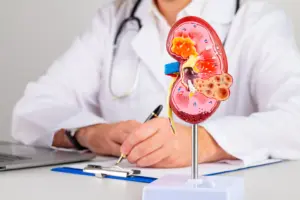
Liver diseases: When most people think about health problems, the liver doesn’t usually make the top of the list. From filtering toxins to processing food into usable energy, this organ handles several bodily functions. When something goes wrong here, the ripple effect is massive.
Let’s talk about some common liver conditions, what sparks them, and why they’re more common than many of us realise.
Also Read | Can fatty liver lead to diabetes and heart disease? Here’s the truth
Fatty liver: The silent build-up
Ever seen a greasy frying pan after cooking bacon? That’s kind of what happens inside the liver with fatty liver disease. Extra fat starts to pile up in liver cells. For some, it’s linked to heavy drinking, but more often these days it comes from overeating, obesity, and insulin resistance.
The frustrating part? You usually don’t feel it in the early stages. No pain, no flashing red warning light. People often discover it by accident during a routine blood test or ultrasound. Left unchecked, though, it can progress to inflammation and scarring.
Hepatitis: Inflammation with many faces
“Hepatitis” is just a fancy word for liver inflammation. The most well-known culprits are viruses, hepatitis A, B, and C (and a few less famous cousins). Each spreads differently: contaminated food or water, blood contact, or unprotected sex.
There are also non-viral versions, triggered by alcohol, toxins, or even the immune system mistakenly attacking liver cells. What’s tricky is how sneaky it can be. Sometimes it looks like the flu. Other times, it’s fatigue that doesn’t go away, yellowing eyes, or no symptoms at all until it’s advanced.
Cirrhosis: When scars take over
Picture a smooth sponge turning into a rough, stiff rock. That’s cirrhosis. Repeated damage from alcohol, fatty liver, or chronic hepatitis can lead to scar tissue replacing healthy tissue. Even though the liver tries to heal, eventually the structure weakens.
Cirrhosis messes with digestion, hormones, and even brain function. Symptoms like swollen legs, fluid in the belly, and confusion can appear. At this stage, lifestyle changes alone may not be enough, and some people need transplants.

Liver cancer: The dangerous turn
Sometimes chronic liver damage sets the stage for cancer, especially hepatocellular carcinoma. It doesn’t always start with warning signs. By the time people notice weight loss, loss of appetite, or upper abdominal pain, it can already be advanced.
The major risk factors? Long-term hepatitis infections, cirrhosis, heavy drinking, and, in some parts of the world, contaminated food sources like aflatoxins.
Most liver problems don’t happen overnight. They build quietly over the years. The causes often connect back to everyday choices: diet, alcohol, and infections that go untreated. That’s both the scary and hopeful part. Scary because damage can sneak up. Hopeful because prevention is very real; with regular checkups, vaccines for hepatitis, and cutting back on alcohol or processed junk can make an enormous difference.
Also Read | What’s the difference between alcoholic and non-alcoholic fatty liver?
The liver may not complain loudly at first, but when it finally does, it’s serious. Paying attention earlier is like fixing a small leak before the ceiling caves in.








